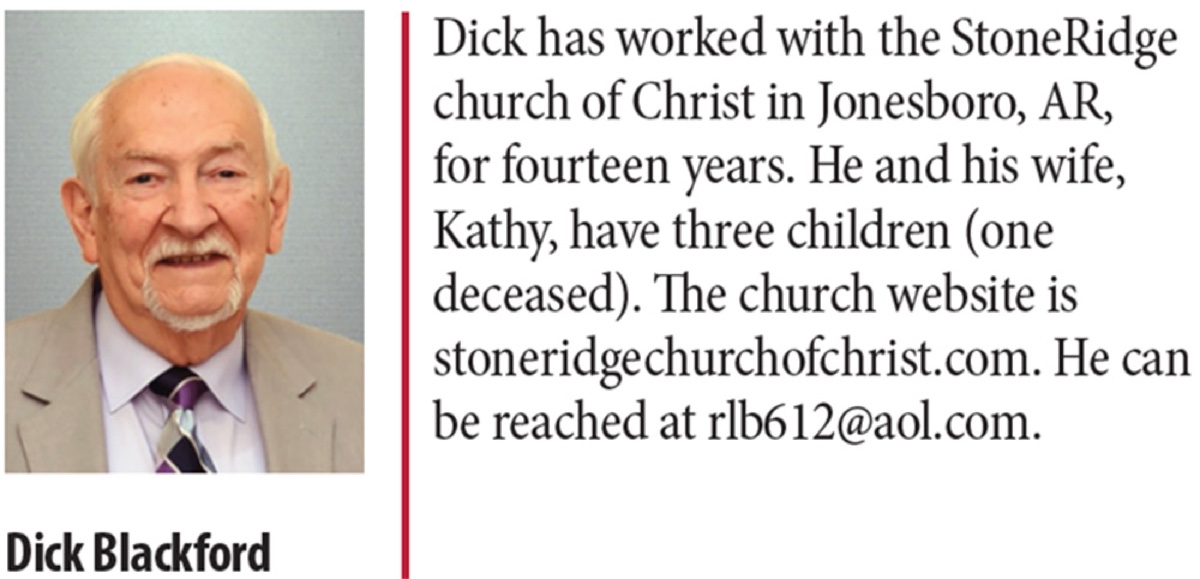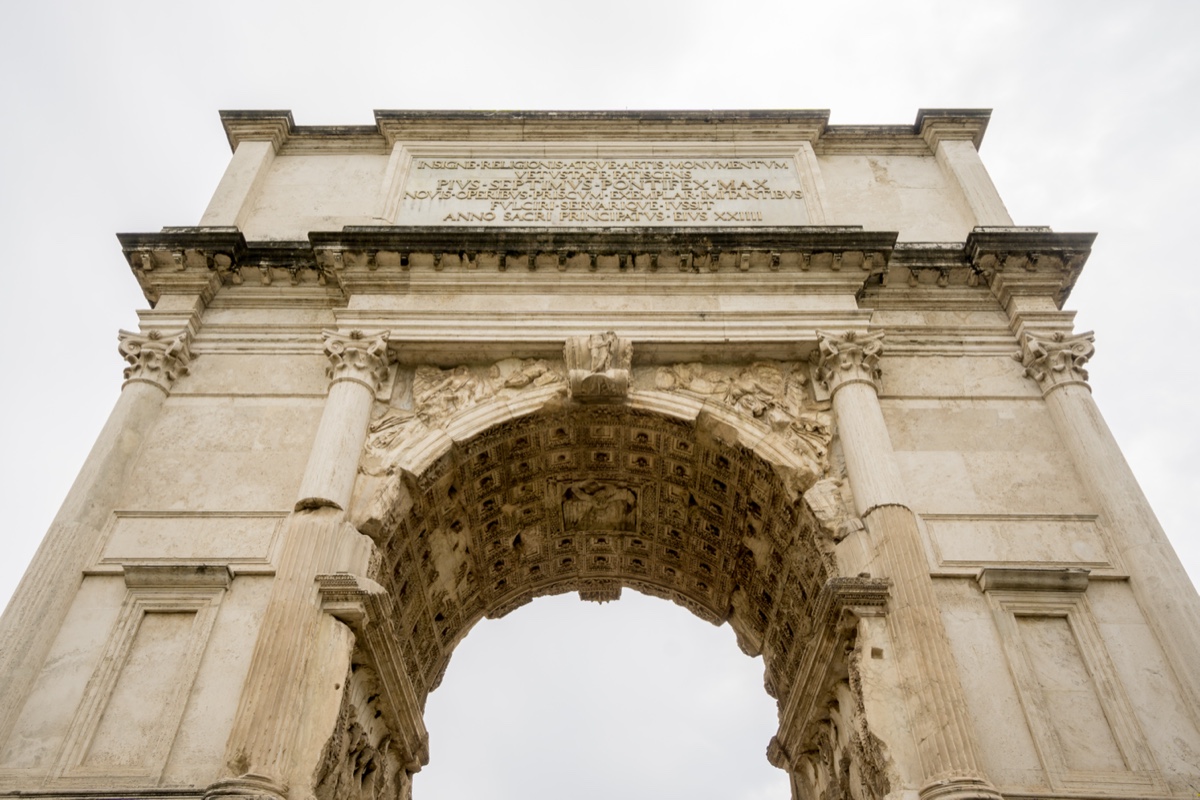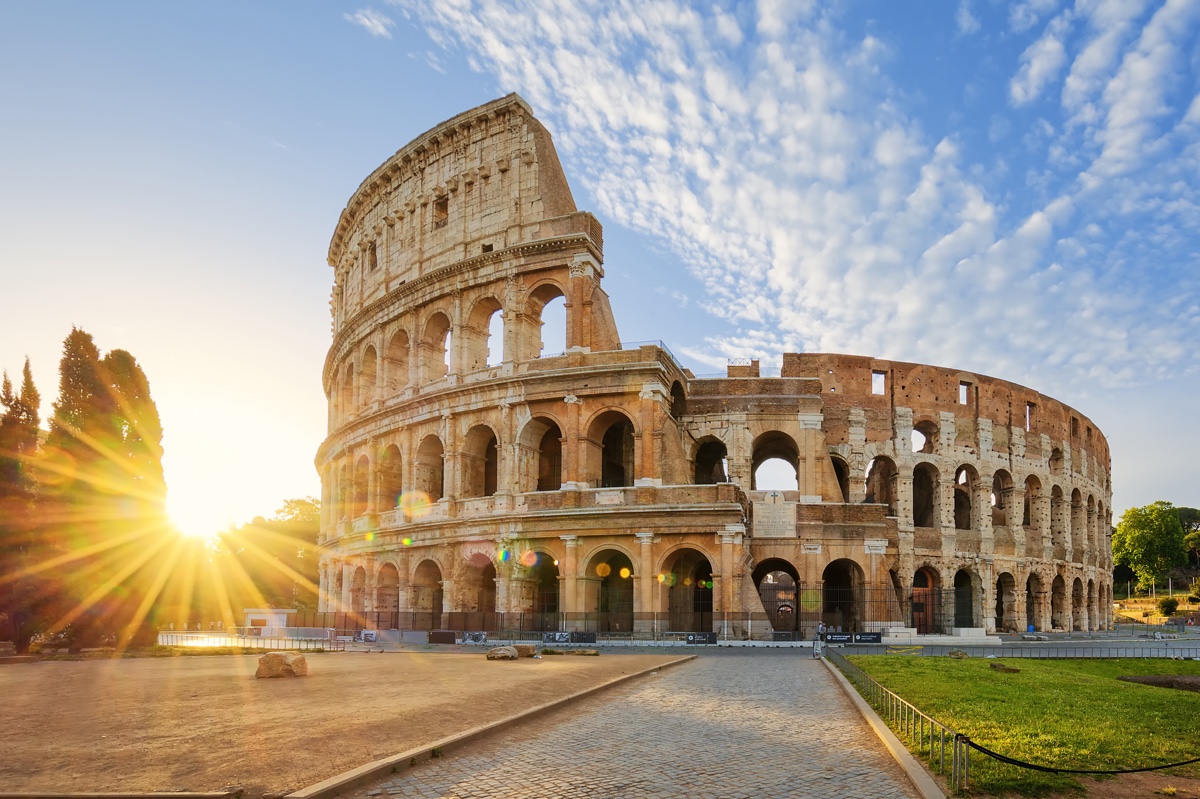By Dick Blackford
Synopsis: The ruins of the Roman Colosseum are a monument to the survival of Christianity and the utter failure of a mighty world empire to destroy it. This realization give us courage to face the challenges of today.
One definition of a monument is, “a building, structure, or site that is of historical importance or interest” (Google Dictionary).
There are two monuments that are very close in distance (333 yards) of each other in the city of Rome. Standing in a particular place, you can see both in the same view. One is the Arch of Titus. The other is the Roman Colosseum..
The Arch of Titus is a monument to the destruction of Jerusalem and the Jewish State. The relief depicts the triumphal procession of Titus (and his father, Vespasian), honored for his destruction of Jerusalem in AD 70. On the south relief, the spoils of war are displayed as part of the procession: trumpets, the table of showbread, and the menorah. In the time of Constantine, some interpreted the table as actually representing the Ark of the Covenant. The Arch of Titus was commissioned by Emperor Domitian in AD 81 and was completed in AD 85. It is the oldest and only Triumphal arch in Rome still standing today. While it celebrates the temple’s destruction, it also celebrates the “deity” of Titus. However, Titus died in AD 81 at the age of forty-one and hasn’t been heard from since.
The destruction of Jerusalem and its temple was a fulfillment of a prophecy given by Jesus (Matt. 24:1,2; Luke 21:20-24). He also gave His disciples signs to look for to know when it was best for them to escape and the things for which they should pray (Matt. 24:15-22).
History records the destruction of the biblical Jewish nation. Josephus records the “Last Stand” of a Jewish Revolt that occurred when Jews took refuge on Masada, a mountain fortress that had been erected by Herod the Great in case he ever needed a place of refuge. Because of strategy, it took the Romans until AD 73-74 to capture the mountain. Josephus says that 967 Jews who were living there committed mass suicide to prevent being enslaved by the Romans. While that story has been in dispute, it has not been successfully refuted.
The nation called Israel today should not be confused with the biblical nation of Israel. It does not bear the identifying characteristics. It has no king, no throne, no temple, no priesthood (because of loss of genealogical records), no animal sacrifices, etc.
God kept His word and gave biblical Israel all the land that He had promised them (Josh. 1:4-6; 21:43-45). However, their retention of the land was conditioned on them remaining faithful to God; otherwise, He would remove them from the land (Josh. 23:15-16). They did not remain faithful, even rejecting the Son of God when He came in fulfillment of all those prophecies, and Jesus prophesied their destruction. The nation called Israel of today is not connected with anything the Bible says, but primarily by the will of the United States—minus the earmarks that would identify it with the Israel of the Bible. The Titus Arch stands as a monument to the destruction of biblical Israel and fulfilled prophecy.
Individually, God never stopped loving them, and He wants them to be saved—thus the Day of Pentecost in which many Jews became Christians (Acts 2; Rom. 1:16). While the nation of Israel was destroyed, God never forgot them individually.
From a personal viewpoint I am glad national Israel today is a democracy that allows us to visit freely and is preserving biblical sites that permit us to do research and study, which might not be the case if they were in the hands of those who are hostile to the New Testament.
There were both local and empire-wide persecutions of Christians. The Roman Colosseum is the place where many Christians died grisly deaths, being ripped apart by savage animals. Others were killed at great disadvantage by having to fight the gladiators. About 400,000 people died there and at least 3,000 were Christians. This was one of the most popular forms of entertainment in the Roman world. According to the National Geographic, it was probably begun about AD 73-75 and was almost completed in 79 when Vespasian died. Titus, Vespasian’s older son, dedicated it in AD 89 with 100 days of games—in which 5,000 men and animals were said to have been slaughtered on one day.
The Mighty Roman Empire that seemed impregnable, that allowed such horrid, bloody entertainment, ceased to exist over sixteen centuries ago. The Roman Colosseum, where thousands gathered for such a low and ruthless form of entertainment, is now in ruins. By the twentieth century, nearly two-thirds of the original building had been destroyed. Who could ever have imagined that Christianity would become the official religion of the Roman Empire by AD 323? Did God mock the mighty empire that murdered so many of His followers? Believers should view the ruins of the Roman Colosseum as a monument to the survival of Christianity and the utter failure of the most powerful empire to stamp it out! Let that sink in!
The survival of Christ’s church and His teachings were also a fulfillment of prophecy. The gates of hell could not prevail against it! (Matt. 16:18). Not even the death of Jesus would keep the church from being established on the day of Pentecost (Acts 2)! Many would see the kingdom come in their lifetime (Mark 9:1). It would stand forever! Daniel 2:44-45 declares, “And in the days of those kings, the God of heaven will set up a kingdom that shall never be destroyed, nor shall the kingdom be left to another people. It shall break in pieces all these kingdoms and bring them to an end, and it shall stand forever.” It is an “everlasting kingdom” (Dan. 7:27).”The kingdom of the world has become the kingdom of our Lord and of His Christ, and He shall reign forever and ever.”
Get this! Both the destruction of a nation that rejected the son of God and the survival of His eternal kingdom established by Christ that “cannot be shaken” (Heb. 12:27), were prophesied in the Scriptures. We see both of these in the Arch of Titus and the Roman Colosseum. I wonder if the Lord has allowed them to survive for a reason? As a reminder about that kingdom that could never be destroyed and would last forever while the Roman Empire had its downfall sixteen centuries ago.
Jesus said, “Unless one is born of water and the Spirit, he cannot enter the kingdom of God” (John 3:5). When the Samaritans “believed Philip as he preached good news about the kingdom of God and the name of Jesus Christ, they were baptized, both men and women. How did they know to do that? They were taught what the King said is necessary to enter the kingdom!
I hope you have an honest heart and will respond as these disciples did and become a citizen of the eternal kingdom.


Image-1 Caption: The Arch of Titus

Image-2 Caption: The Roman Colosseum
